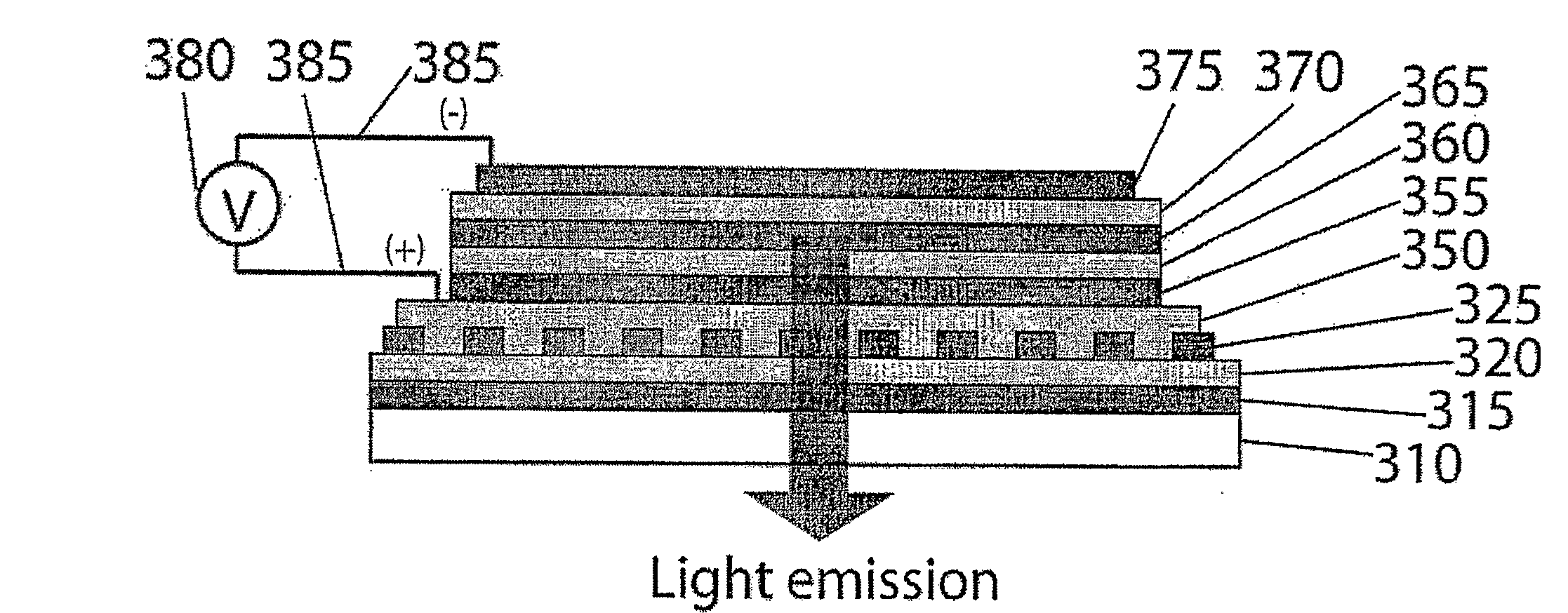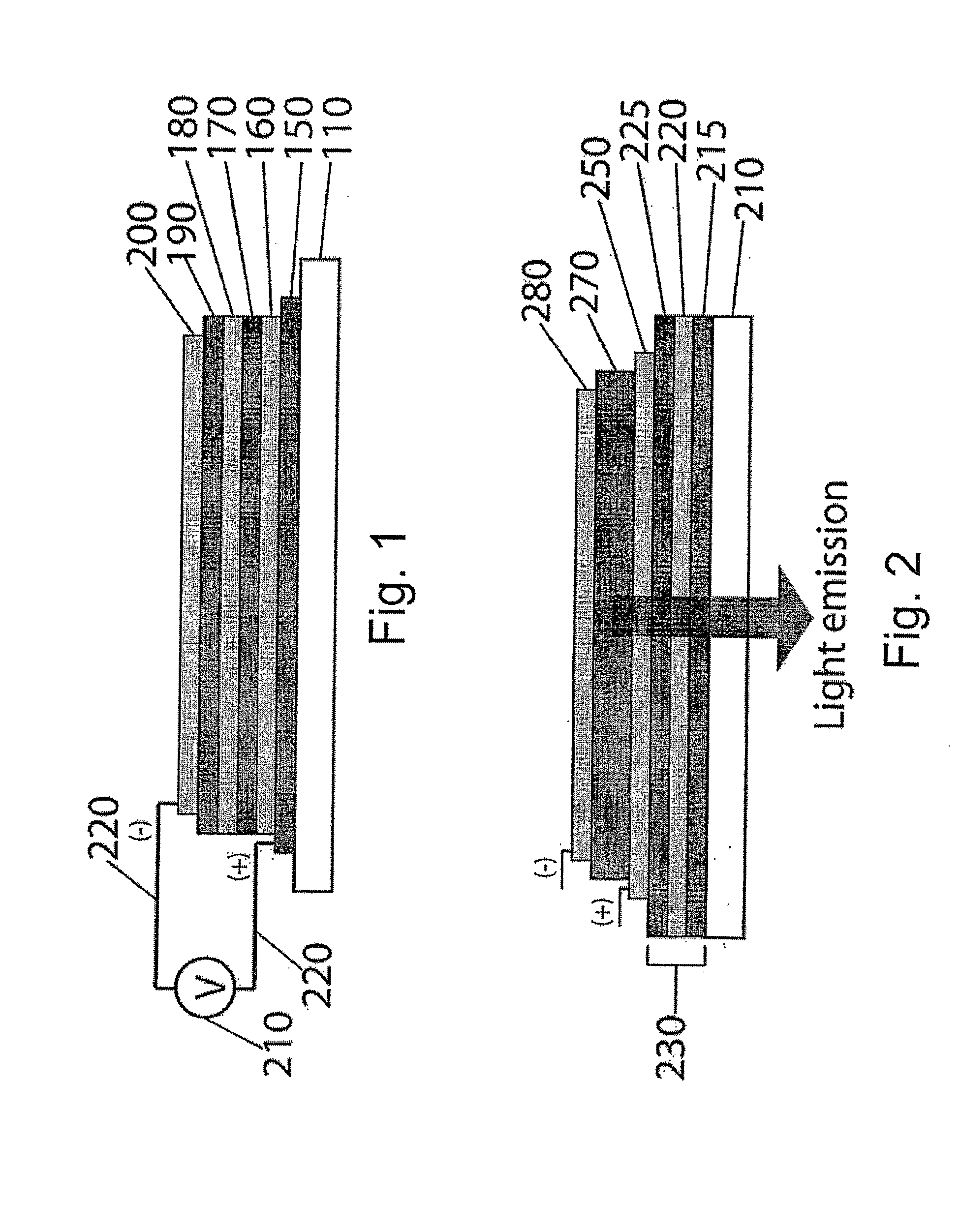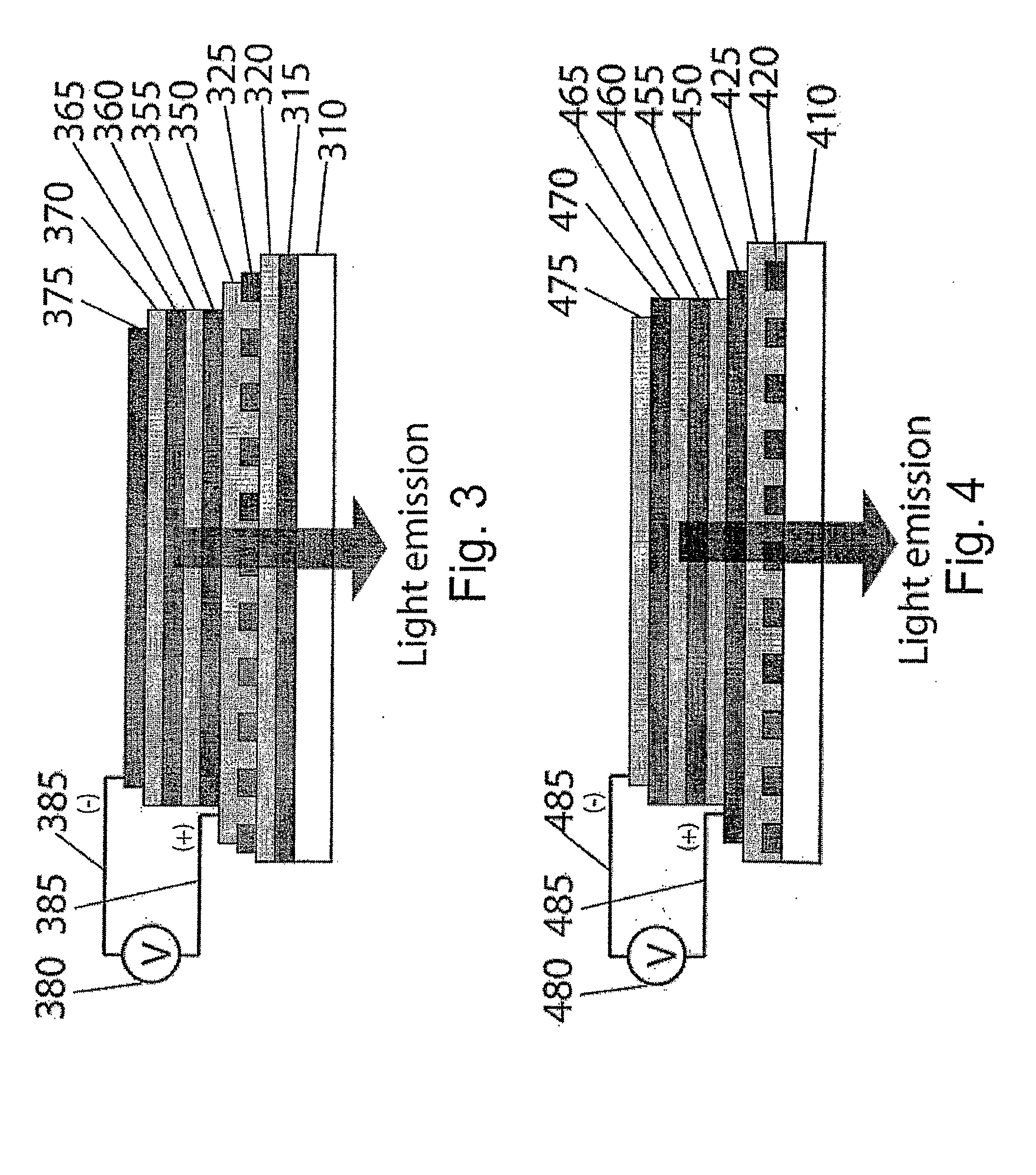Optical Device Structure
- Summary
- Abstract
- Description
- Claims
- Application Information
AI Technical Summary
Benefits of technology
Problems solved by technology
Method used
Image
Examples
polymer example i
Titanium Oxide Hybrid Polymer 1
[0135]Ti(iOPr)4 (0.05277 mol) was placed in a round bottom flask. TiCl4 (0.05277 mol) was added by syringe and needle. The solution containing a white solid was stirred at room temperature (RT) for 10 min. 125.04 g of 2-isopropoxyethanol was added and the clear yellow solution was stirred at room temperature for 30 min. (Nd=1.4332). 3.80 g of H20 (0.21099 mol) was added and the reaction solution was stirred at room temperature for an additional 5 min (Nd 1.4322). 21.36 g of TEA (0.211088 mol) was added to neutralize the reaction mixture. The obtained white suspension was stirred at room temperature for 2 h. The white reaction suspension was filtrated using pressure filter (filter paper size 0.45 um) Nd=1.4235 and pH=6.5-7 (pH-paper was used for determination). The amount of material in grams after filtration was 92.71 g. An acidic water solution (nitric acid, HNO3, 0.0652 mol) was added to the reaction mixture. Then, metacrylic acid (MAA, 0.1304 mol) w...
polymer example ii
Tantalum Oxide Hybrid Polymer 1
[0136]TaCl5 (0.007342 mol) was placed to a round bottom flask and methanol (MeOH) (26 ml) was added. To the clear reaction solution Ta(OEt)5 (0.007342 mol) was added. The clear reaction solution was stirred at room temperature for 2 h. Solvent exchange from MeOH to 2-isopropoxyethanol (5×) was carried out using rotary evaporator (p=200-51 mbar, tbath=40° C.). The clear reaction solution was stirred at room temperature for a few minutes and after that the reaction solution was neutralized using TEA (m=4.62 g; 0.04566 mol). The white suspension was stirred at room temperature for 2 h and then filtrated using pressure filter (0.45 um). The clear solution obtained was placed in freezer overnight. After this the suspension was filtrated. The solvent used during the synthesis was removed by rotary evaporator (p=100-1 mbar, t(bath)=40° C., at 1 mbar for 10 min). 6.82 g of IPA:MeOH:1-butanol solution (6:3:1) was added as processing solvent to the material. Cle...
polymer example iii
Tantalum Oxide Hybrid Polymer 2
[0137]TaCl5 (0.04218 mol) was placed in a round bottom flask and MeOH (151.1 ml) was added. The clear reaction solution was stirred at room temperature for 2 h. Solvent exchange from MeOH to 2-isopropoxyethanol (5×) was carried out using rotary evaporator (p=200-50 mbar, t(bath)=40° C.). The clear reaction solution was stirred at room temperature for a few minutes. The reaction solution was neutralized using TEA (m=14.82 g; 0.14646 mol). The white suspension was stirred at room temperature for 2 h and then filtrated using pressure filter (0.45 um). The slightly cloudy solution thus obtained was filtrated again using syringe and filter (0.45 um). The resulting clear solution was placed in freezer and kept there overnight. After this the suspension was filtrated again using a syringe filter (0.45 μm). The solvent was removed by rotary evaporator (p=100-1 mbar, t(bath)=40° C., at 1 mbar for 10 min). 240 wt-% of an MeOH: 1-butanol solution (1:1) was added ...
PUM
 Login to View More
Login to View More Abstract
Description
Claims
Application Information
 Login to View More
Login to View More - Generate Ideas
- Intellectual Property
- Life Sciences
- Materials
- Tech Scout
- Unparalleled Data Quality
- Higher Quality Content
- 60% Fewer Hallucinations
Browse by: Latest US Patents, China's latest patents, Technical Efficacy Thesaurus, Application Domain, Technology Topic, Popular Technical Reports.
© 2025 PatSnap. All rights reserved.Legal|Privacy policy|Modern Slavery Act Transparency Statement|Sitemap|About US| Contact US: help@patsnap.com



